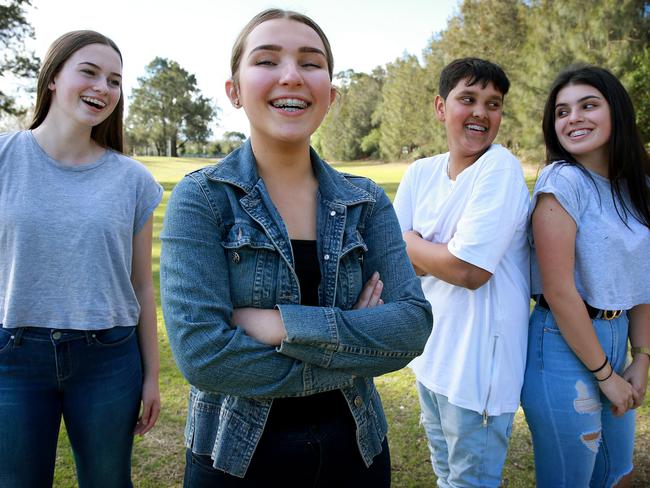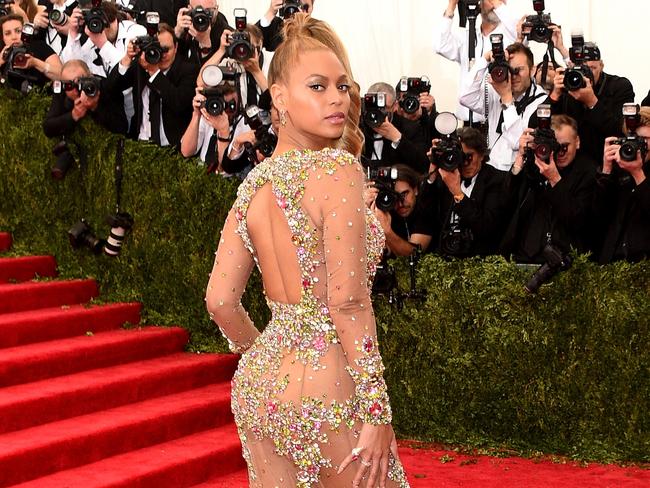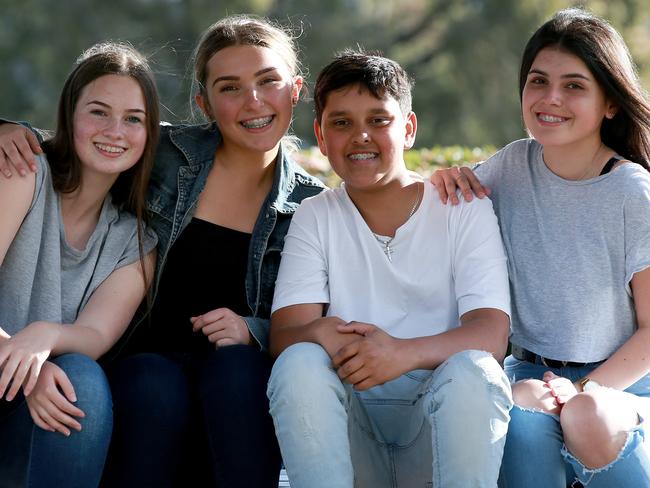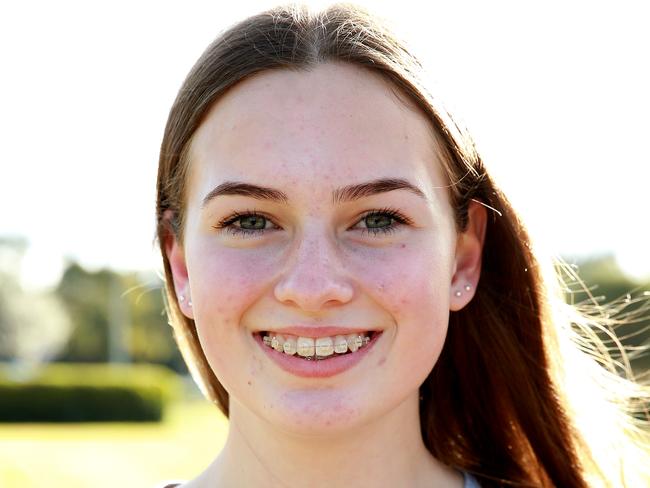Why braces are now the latest must-have accessory
GONE are the days of being taunted at school for wearing braces. Instead they’re the cool must-have accessory all the kids want to have.
Lifestyle
Don't miss out on the headlines from Lifestyle. Followed categories will be added to My News.
REMEMBER that Brady Bunch episode where Marcia gets braces and declares herself “ugly, ugly, ugly”?
Thankfully for today’s kids, braces have come a long way from the days when they were derided as train tracks and the wearers as metal mouth.
In fact, a recent survey by the Australian Society of Orthodontists found the majority of kids and teens want to get braces, with seven out of 10 children reacting with happiness when told they need them.
And as many as 94 per cent of orthodontists claim they have had a parent bring their child in for a consultation merely because they want to get braces.
In the same way that it’s now cool for kids to wear glasses, braces have undergone a cultural revolution, based mostly on the fact they are less cumbersome and can be accessorised with just about any colour.

“The stigma of wearing braces is no longer there,” says Australian Society of Orthodontists spokesperson and specialist orthodontist Theresia Sudjalim.
“I have definitely had cases where the child has declared they want braces and I have had to break the news to them that it’s not entirely necessary. Some want it for the perfect smile, others for fashion and even some because their friends have them.
“For me, it’s lovely, it’s the only part of dentistry where kids are excited to come in.”
MORE STORIES
THUNDER FROM DOWN UNDER: AUSSIE MEN HEATING UP LAS VEGAS
WHY AUSSIES ARE STILL OLD-FASHIONED ROMANTICS AT HEART
And the trend is not just happening in our schoolyards. Actors, particularly younger ones, have long embraced teeth re-aligners to perfect their smile with child stars such as Drew Barrymore, Emma Watson and Dakota Fanning proudly wearing them. Even Prince Harry sported regular braces while his brother William chose the more discrete inside, or lingual, braces.
Many also chose to wear braces as adults, including Tom Cruise who had them put on in his 40s; Beyonce who is said to have worn them in support of her many young fans, and Gwen Stefani who didn’t need them but chose to wear them in the name of fashion.

Specialist orthodontist of almost 20 years, Howard Holmes, says that in the age of the selfie, having a picture perfect smile has never been more important and credits our obsession with taking photos of ourselves with the rise in braces for cosmetic reasons.
“This is the selfie generation,” Dr Holmes says.
“Kids, teens and even adults see photos of themselves up close in a classic selfie pose all the time now and they see any imperfections in their teeth closely and often.
“The modules, or the latex o-rings that go around the braces, come in any colour of the rainbow and kids are keen to accessories with them. When they come in for their appointments we can change these for them and they will sport the colours of their favourite footy team, their school or even go red and green at Christmas time.
“This is the bit that gets the kids excited to wear braces.”
The most common type of braces are those made of stainless steel, but much smaller and smoother than a generation ago. You can also get them overlaid in gold, clear ceramic braces, lingual or behind-the-teeth braces and clear aligners like those made by Invisalign.

Clear aligners are increasing in popularity because they are clear, for a more subtle look, and can be removed by the wearer when eating and so eliminates food restriction associated with wearing standard braces. Align Technology pioneered the invisible orthodontics market when they developed the Invisalign system in the late 1990s.
Dr Holmes says clear aligners will eventually replace standard metal braces.
“The way I look at it, metal braces are the old-school analog version and clear aligners are the modern, digital version,” he says.
“Clear aligners will ultimately superseded traditional braces. Some parents worry about the issue of compliance and ensuring their child doesn’t forget to put them back on or leave them off for too long. But there’s compliance issues with traditional braces too, things like ensuring the child cleans them properly, for example.”
MORE FROM MERCEDES MAGUIRE
TEEN BINGE DRINKING: GET THE FACTS
While advancements with clear aligners have demonstrated one of the biggest changes in orthodontics in the past decade, Dr Sudjalim says there have been other areas of development that have benefited patients.
Interoral scanners, which capture an image of the inside of the mouth and convert it to 3D, means less time in the chair and a better overall experience for the patient. And Dr Sudjalim says that now even robots are used to bend the wires that fit onto the braces, which was once done only by hand.
But not all trends are embraced by the orthodontics industry. One area they warn the consumer to be careful of is short-term orthodontics.
The stigma of wearing braces is no longer there
Where a standard braces treatment may take roughly 12 months to two years, depending on the issues, and cost about $7000, there is a growing market for a faster, cheaper product.
“Short term orthodontics has crept in over the last few years and is generally offered by dentists, rather than orthodontists,” Dr Holmes says.
“They still put braces on your teeth but rather than seeing the treatment through to its optimal completion, they may take them off after just six months and they generally just realign the front six teeth.
“In some cases, you may have a reasonable outcome, but often a relapse of the original problem can occur, teeth can be pushed too far forward, you can get gum recession and an uneven or uncomfortable bite.
“It’s a cost and convenience thing that attracts patients. If someone sees and advertisement for six-month braces, it can be an attractive option, but it’s a case of buyer beware. It’s often presented as a revolutionary new treatment, but they are not doing anything different to regular braces, other that putting them on less teeth and for less time.
“And it should never be recommended for kids or teens.”
“HAVING A CONFIDENT SMILE IS AT THE HEART OF SELF IMAGE”
In the age of the selfie, it’s not surprising to discover that one third of Australian teens are dissatisfied with their teeth, according to a new survey by teeth realignment company, Invisalign. The same survey found 71 per cent of teens and their parents believe a nice smile demonstrates self-confidence.
The 2018 Teen Confidence Survey, which polled teens and their parents, also revealed almost a quarter of teens believe changing their appearance would improve their self-confidence.
“Having a confident smile is really at the heart of self image,” says child and family psychologist Clare Rowe. “When someone doesn’t feel confident about their smile then that self doubt and resulting anxiety infiltrates otherwise enjoyable social situations, making them stressful.

One in four teens are not comfortable in their own skin, the survey found, and 75 per cent of those said it was due to their appearance. By comparison, as many as 84 per cent of parents of the teens polled believed their child was confident, revealing a discrepancy with the way teens feel and the way their parents view them.
“This means that there are a significant number of teens struggling with the confidence of how they look and not making it known to those closest to them,” Rowe says. “They are likely struggling internally and grappling with self-image issues without it being obvious to those around them.”
Around 77 per cent of teens felt more confident after having braces put on and one third of those who haven’t had their teeth aligned said they would have it done, with most believing it would improve their confidence. More than 60 per cent of teens said they would prefer clear aligners.
“I WAS REALLY SELF-CONSCIOUS ABOUT MY TEETH”
Veronica Williams doesn’t have her school formal circled on her calendar or even the last day of school.
For the 15-year-old teen from Campbelltown, the most important date in her future is the day her braces come off. Veronica had her braces put on in December last year and her full treatment will last two years — and despite the occasional pain and discomfort, she is so happy to have them on.
“My teeth were really messed up and crooked before I had braces on,” she says.
“I kept complaining to my mum because I was really self-conscious about my teeth. I didn’t like to smile with an open mouth or I would put my hand in front of my mouth.
“I remember when I went to my first orthodontist appointment, they asked me to smile for a photo so they could see my teeth and I smiled with my mouth closed, even then.
“No one ever teased me or anything, it was more about how I saw myself, but since having braces on people comment on how straight my teeth are now.”

One thing Veronica doesn’t have to be self-conscious about is her braces, she says just about every one of her friends have them, and some of the girls just had basic issues like an overbite but got them anyway. She says the selfie culture and being exposed to picture perfect smiles constantly through social media has made teenagers more conscious than ever before about their teeth and smiles.
“The ideal smile is one with perfectly straight, white teeth, we see it all the time,” she says.”
So it makes sense that we want to have that too. And you can change the colours of the bands too, which is cool. I like the blues and aquas and sometimes pink.
“I have to have them on for two years all up but the day I get them off will be the best day of my life.”

